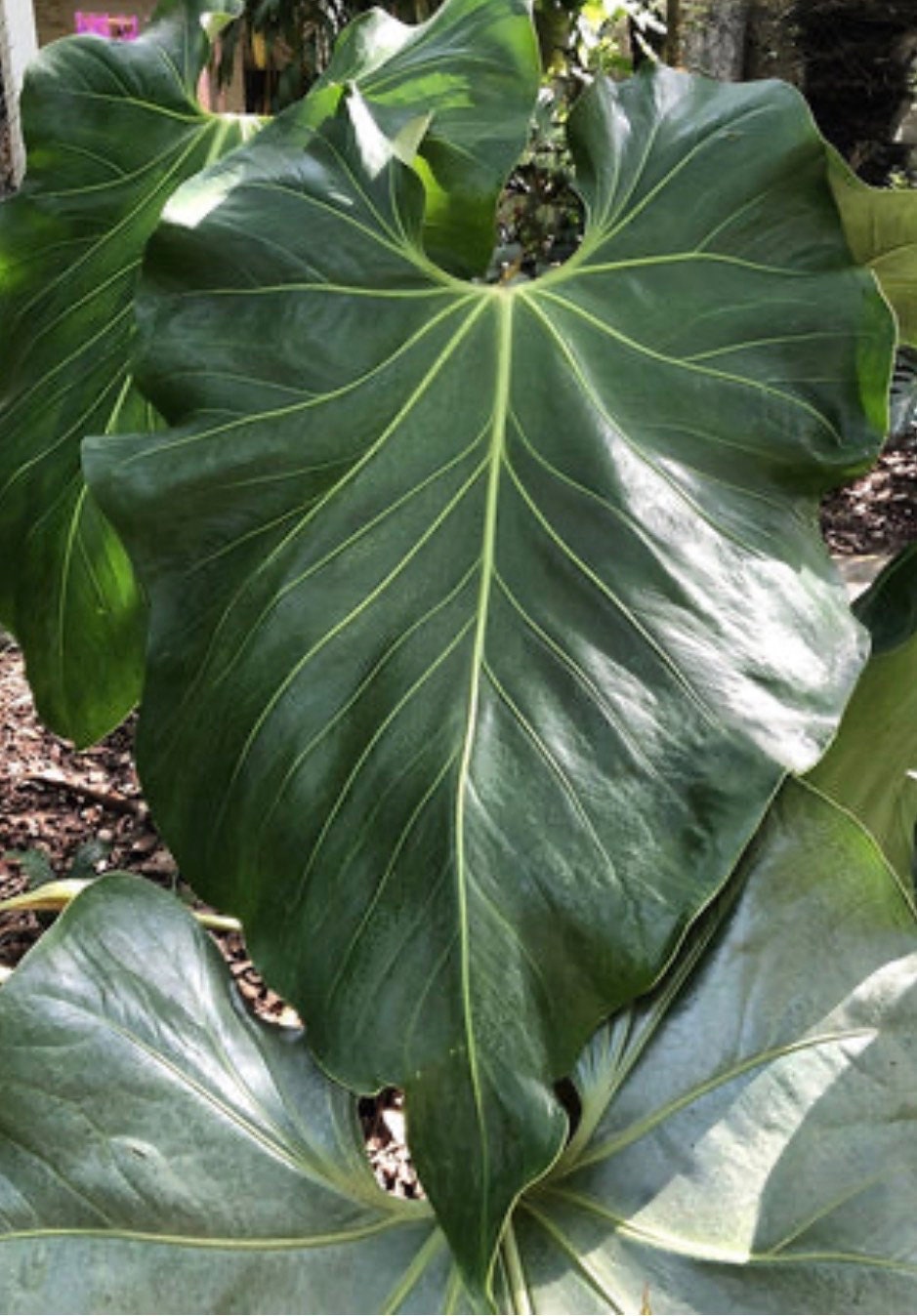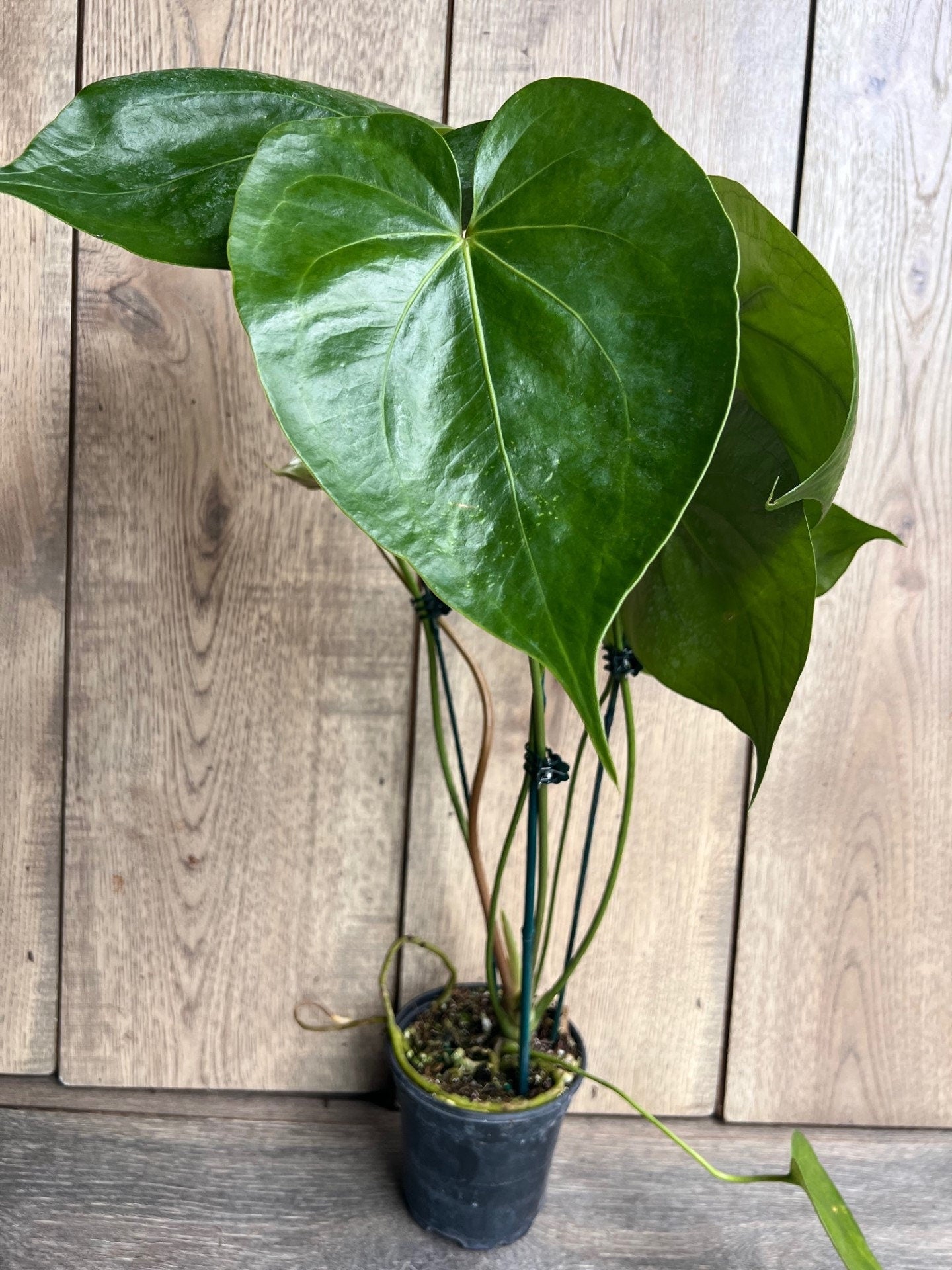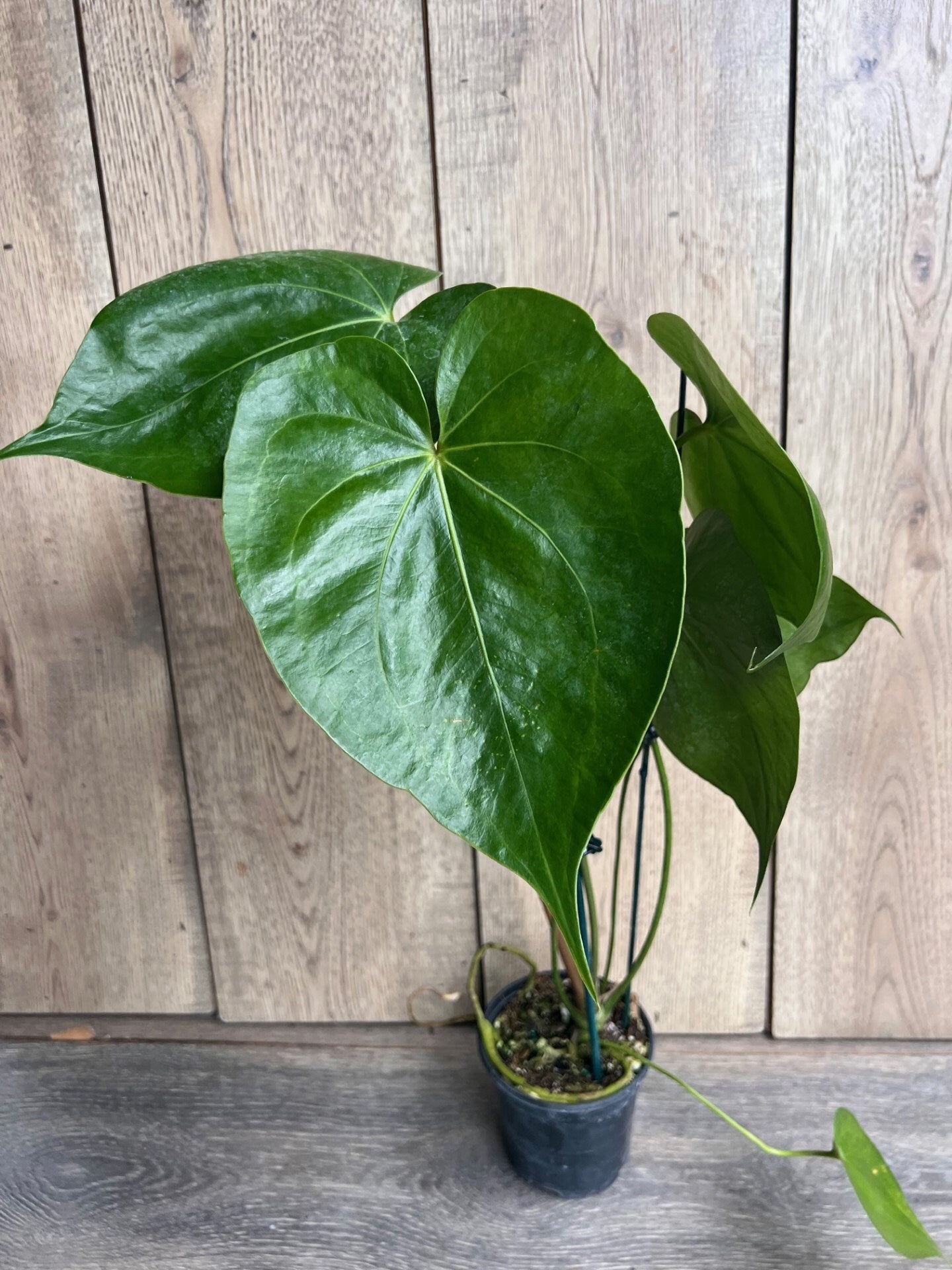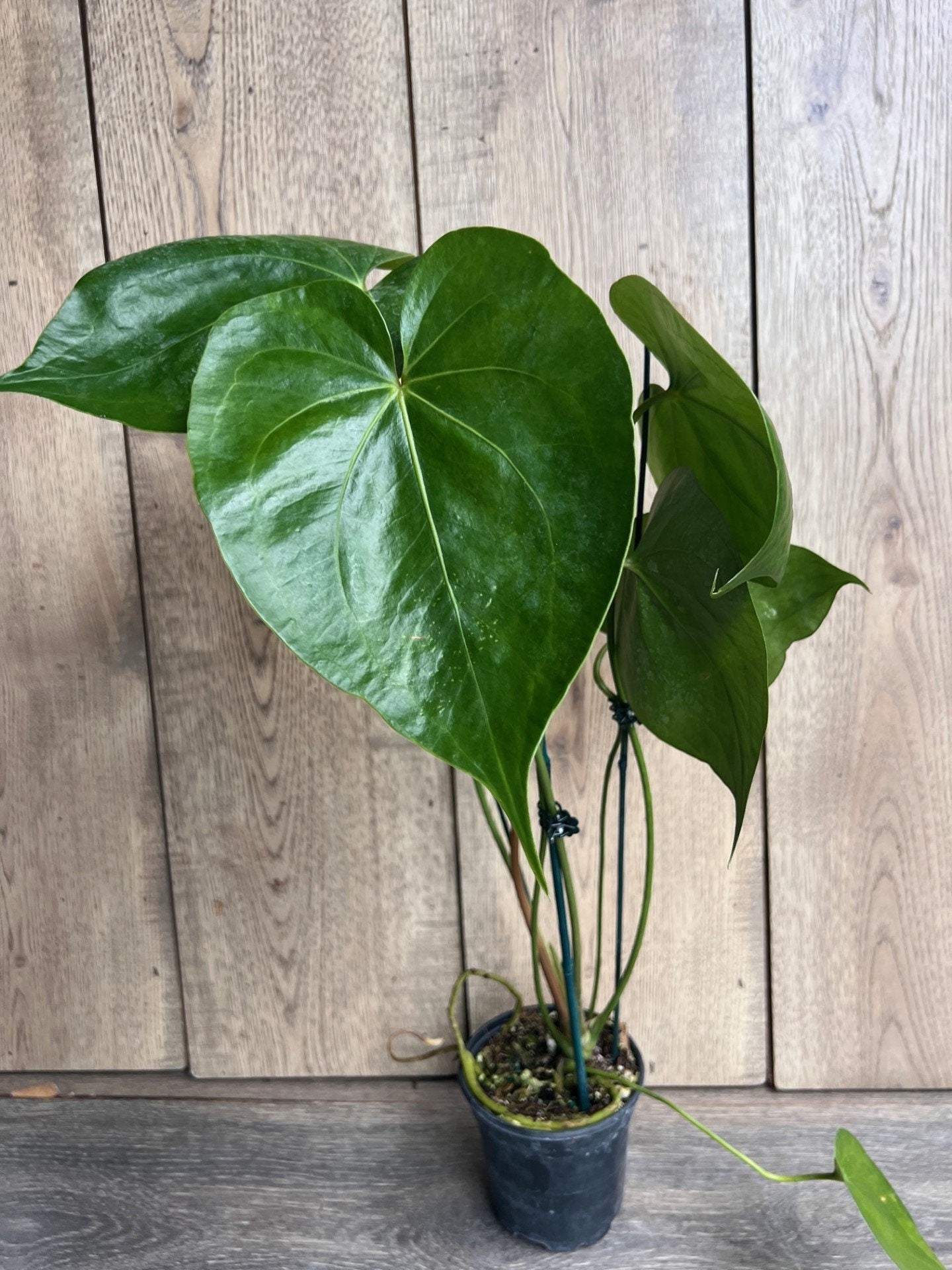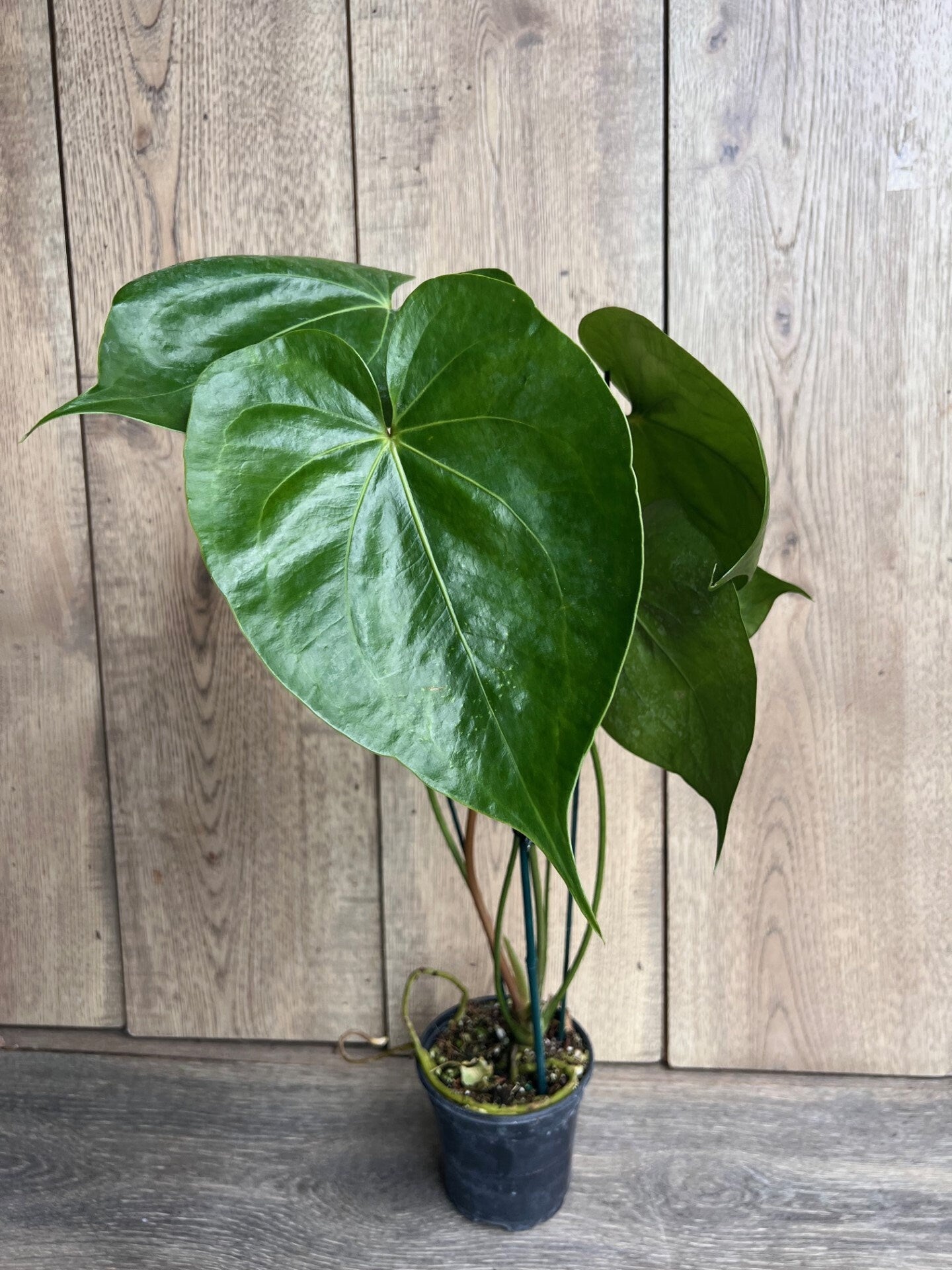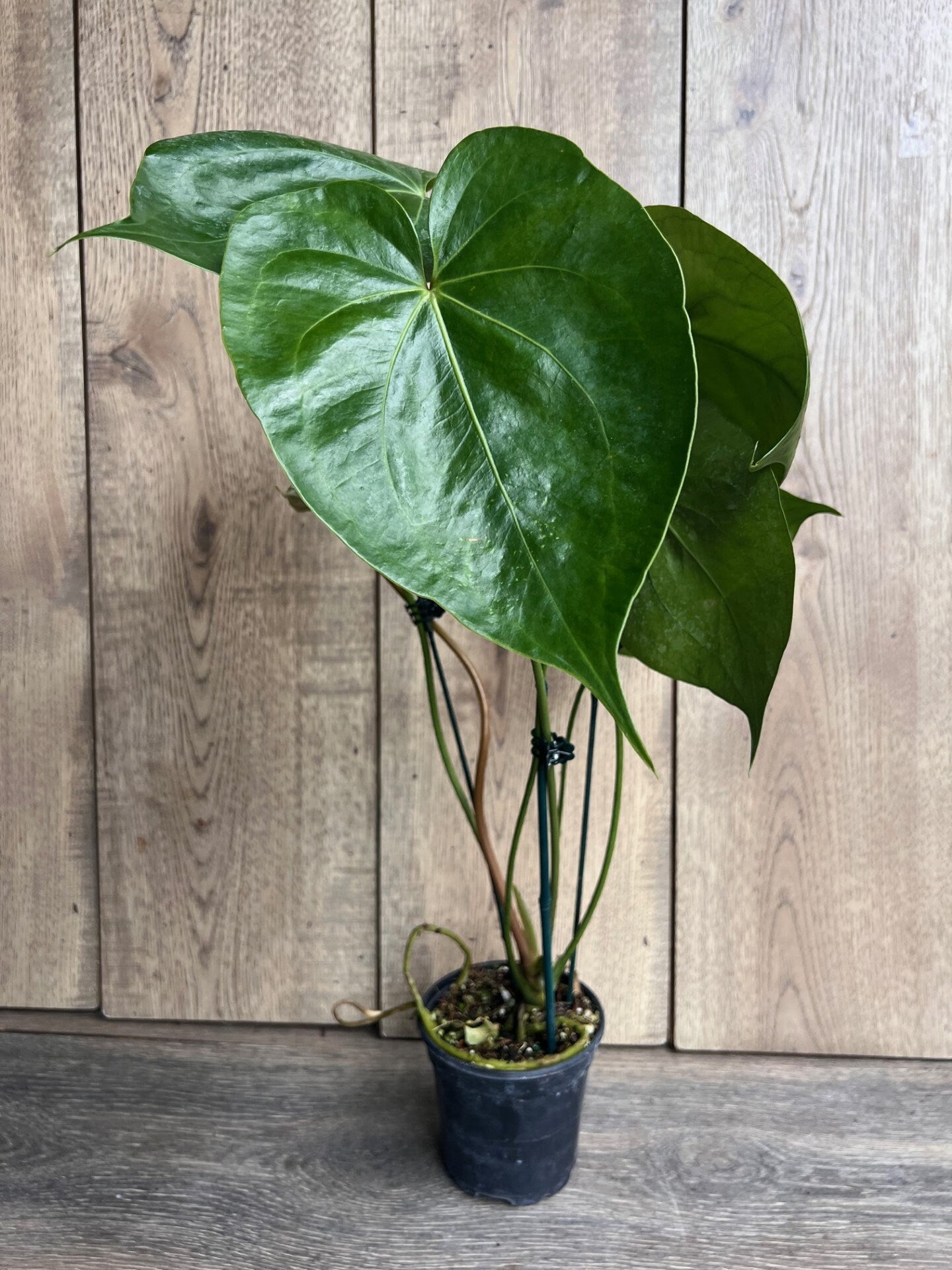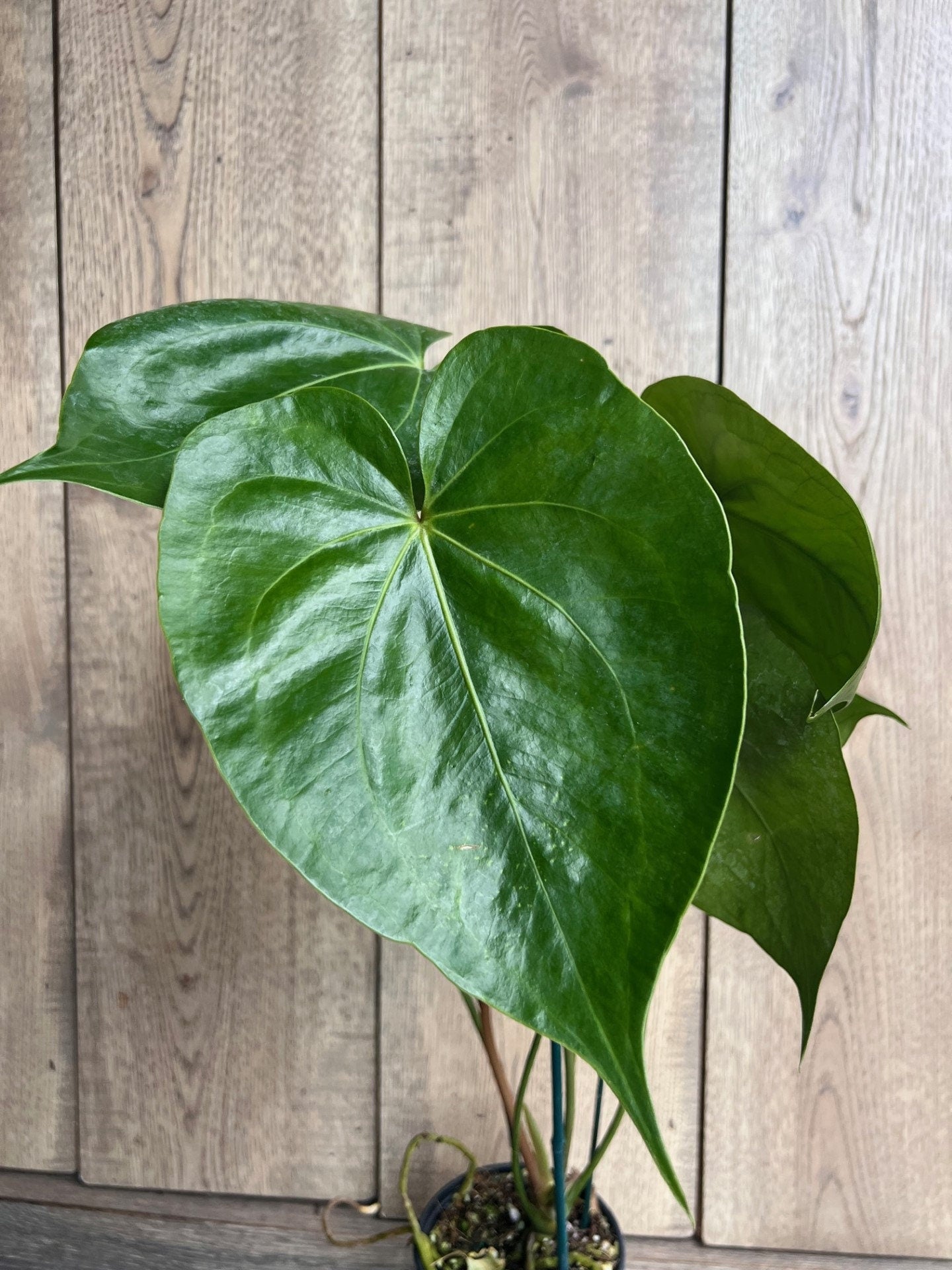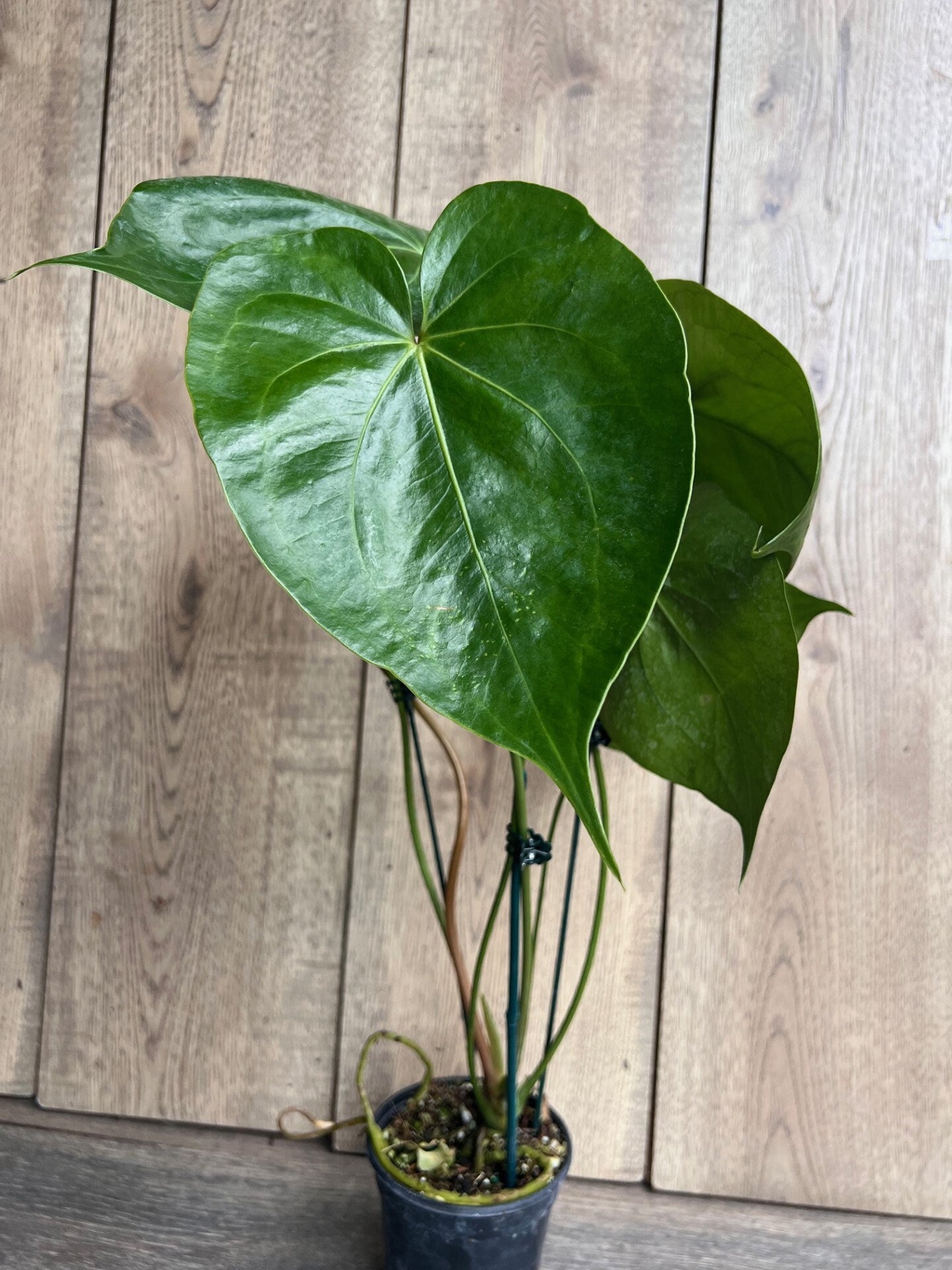1
/
of
9
Anthurium faustomirandae, Faustino’s Giant in 4" Pot
Anthurium faustomirandae, Faustino’s Giant in 4" Pot
Regular price
$44.80 USD
Regular price
$59.74 USD
Sale price
$44.80 USD
Unit price
/
per
Shipping calculated at checkout.
Couldn't load pickup availability
Anthurium faustomirandae – Faustino’s Giant is a rare and stunning species of Anthurium known for its glossy, dark green leaves and beautiful spathes. Also called Fausto’s Anthurium, this tropical gem is native to Central and South America and brings tropical elegance to any space. While it requires specific care, it thrives with the right conditions and offers a unique addition to any indoor collection.
Light Requirements
- Ideal Light: Bright, indirect light is ideal. Avoid direct sunlight as it can scorch leaves.
- Low Light Tolerance: Will survive in low light but may not grow vigorously or flower.
- Best Indoor Locations: South or east-facing windows are great for providing filtered sunlight.
Watering
- Watering Frequency: Allow the top 1-2 inches of soil to dry between waterings. Water thoroughly but avoid letting the plant sit in water.
- Signs of Overwatering: Yellow leaves, mushy stems, or a musty smell from the soil.
- Signs of Underwatering: Dry, crispy leaf edges or wilting leaves.
Humidity
- Preferred Humidity: Thrives in 60% or higher humidity.
-
How to Increase Humidity:
- Use a humidifier.
- Place the pot on a humidity tray (shallow dish with pebbles and water).
- Group plants together to boost local humidity.
Temperature
- Ideal Range: 65°F to 80°F (18°C - 27°C).
- Avoid: Temperatures below 50°F (10°C) and sudden drafts or air conditioning to prevent stress.
Soil
- Requirements: Well-draining, light, and slightly acidic to neutral soil. A mix of peat moss, perlite, and bark/coconut coir works well.
- Repotting: Repot every 1-2 years or when soil compacts. Use a pot 1-2 inches larger in diameter than the current one.
Fertilizing
- During Active Growth (Spring/Summer): Feed monthly with a diluted, balanced liquid fertilizer (e.g., 10-10-10).
- Winter: Reduce or stop fertilization, as growth slows.
Pruning and Maintenance
- Pruning: Remove dead or damaged leaves at the base using sharp, clean scissors.
- Cleaning: Regularly wipe leaves with a damp cloth to eliminate dust and improve light absorption.
Flowering
- Appearance: Characteristic spathes (white or pale pink) with spadices emerge during spring or summer.
- Encourage Blooms: Ensure proper light, temperature, water, and humidity. Healthy plants may bloom multiple times per year.
Pests and Problems
- Common Pests: Mealybugs, aphids, spider mites, and scale insects. Treat infestations with neem oil or insecticidal soap.
- Root Rot: Avoid overwatering and ensure good drainage. Trim affected roots if root rot occurs.
- Leaf Spotting: May result from too much moisture. Avoid overhead watering and ensure good air circulation.
- Leaf Burn: Occurs from too much direct sunlight; relocate to a shadier spot.
Toxicity
- Pets: Anthurium faustomirandae is toxic to cats and dogs if ingested, causing irritation and swelling. Keep out of reach of pets and children.
Propagation
-
Stem Cuttings:
- Cut a healthy stem with at least one node.
- Let it callus for a day or two.
- Plant in a well-draining potting mix. Keep in a warm, humid environment until roots form.
-
Division:
- Separate stems or pups during repotting, ensuring each section has roots. Replant in their own pots.
This rare and elegant Anthurium adds tropical charm to any indoor space with proper care. Providing the right balance of light, humidity, and attention will ensure a healthy and vibrant plant.
Share
